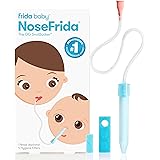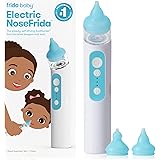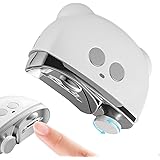Having trouble getting rid of that pesky pacifier habit your little one has developed? As demonstrated in the accompanying video, a simple yet effective strategy can help parents navigate this common challenge. While the video offers a quick visual on the ‘snip’ method, successfully stopping a baby’s pacifier use often involves a more holistic and understanding approach.
For many toddlers, the pacifier evolves from a simple soothing tool to a deeply ingrained comfort object. Understanding the nuances of pacifier weaning is crucial for a smooth transition, ensuring both the child’s well-being and the parents’ peace of mind. This detailed guide explores the strategic ‘snip’ method alongside other expert-backed techniques to effectively get rid of the pacifier.
Understanding the Pacifier’s Role: More Than Just a Soother
Pacifiers serve a vital function for many infants, satisfying the innate sucking reflex and providing significant comfort. This oral motor development is entirely natural and helps babies self-soothe, particularly during periods of stress, fatigue, or discomfort. Consequently, the attachment formed can be quite powerful, making the idea of pacifier weaning a daunting prospect for parents.
However, as children grow, the continued reliance on a pacifier can transition from beneficial to potentially problematic. Pediatricians and dental professionals often recommend limiting pacifier use, especially beyond a certain age, due to potential impacts on oral development and speech. Therefore, a thoughtful strategy to stop pacifier dependence becomes necessary.
The Developmental Arc of Pacifier Use
Initially, pacifiers are often recommended for their protective effects against Sudden Infant Death Syndrome (SIDS) and their ability to soothe newborns. For instance, the American Academy of Pediatrics (AAP) suggests pacifier use during sleep in the first year of life. This early phase is characterized by an undeniable need for oral gratification, which the pacifier readily provides.
As infants mature into toddlers, their oral motor skills develop, and their need for constant sucking diminishes. By around 6 to 12 months, and certainly by 18-24 months, children begin to develop other self-soothing mechanisms and communication skills. Prolonged pacifier use beyond this stage can hinder speech articulation and impact the alignment of developing teeth, necessitating a structured approach to pacifier habit cessation.
When Does a Comfort Become a Concern?
While pacifiers offer immediate comfort, their long-term use can present several challenges. Dental professionals frequently highlight concerns about malocclusion, or misaligned teeth, which can develop from continuous pressure on the palate and front teeth. An open bite, where the upper and lower front teeth do not meet, is a common consequence of prolonged pacifier sucking.
Furthermore, constant pacifier use can impede speech development by limiting opportunities for the tongue and mouth muscles to articulate sounds clearly. Children may also experience increased ear infections, as pacifier use can alter middle ear pressure. Understanding these potential drawbacks empowers parents to make an informed decision about when and how to implement a pacifier weaning strategy.
The Gradual Snip Method: A Strategic Approach to Weaning
The ‘gradual snip’ method, demonstrated in the video, is an ingenious psychological tactic for breaking the pacifier habit. It relies on subtly altering the pacifier’s effectiveness, making it less satisfying for the child. This approach minimizes dramatic confrontations, often more effective than simply removing the pacifier outright.
Parents often report that children naturally lose interest when the pacifier no longer provides the expected comfort or suction. This technique leverages a child’s inherent adaptability and a desire for optimal sensory feedback. Consequently, the pacifier becomes less appealing, paving the way for its eventual elimination.
How the “Snip” Works Psychologically
The core of the snip method lies in disrupting the pacifier’s vacuum seal, which is critical for the soothing sensation. By making a small incision, the airtight seal is compromised, and the pacifier no longer provides the satisfying resistance that children crave. This subtle change often goes unnoticed consciously by the child, yet its effect on their comfort is undeniable.
As the video illustrates, starting with a tiny hole and gradually increasing its size over several days or weeks intensifies this effect. Each subsequent snip further reduces the pacifier’s allure, making the experience less gratifying. This incremental reduction in satisfaction allows the child to gradually disassociate comfort from the pacifier without a sudden traumatic removal, reducing potential meltdowns.
Implementing the Method Effectively
To implement the snip method, begin with a clean, sharp pair of scissors and make a small cut at the very tip of the pacifier nipple. This initial cut should be minimal, just enough to break the seal without immediately altering its appearance drastically. Observe your child’s reaction; they may notice a difference but still accept it for a short period.
Over the next few days, or as needed, progressively snip off small additional pieces, making the hole larger. You might consider snipping once every 2-3 days, depending on your child’s adaptation. Continue this process until the pacifier becomes so ineffective or unappealing that your child voluntarily rejects it, effectively stopping the pacifier habit. Remember to dispose of the altered pacifiers safely to prevent choking hazards from loose pieces.
Beyond the Snip: Complementary Weaning Strategies
While the snip method is highly effective, it often works best when integrated with other comprehensive pacifier weaning strategies. Addressing the pacifier habit involves understanding your child’s emotional needs and providing alternative comfort mechanisms. A multi-faceted approach ensures a smoother and more permanent transition.
Incorporating positive reinforcement and establishing consistent routines can significantly aid in this process. By creating an environment where the pacifier is gradually phased out, parents empower their children to develop new coping skills. This comprehensive strategy supports not just the physical removal of the pacifier but also the emotional adjustment involved.
Timing and Preparation are Key
Choosing the right time to begin pacifier weaning is crucial for success. Avoid periods of significant change or stress in your child’s life, such as starting daycare, potty training, or welcoming a new sibling. These events can increase a child’s need for comfort, making weaning more challenging.
Before beginning, communicate with your child in an age-appropriate manner about the upcoming change, if they are old enough to understand. For instance, you might explain that they are becoming a “big kid” and big kids don’t need pacifiers anymore. This preparation sets expectations and involves them in the process, fostering cooperation in stopping the pacifier habit.
Introducing Alternative Comfort Objects
A significant part of stopping the pacifier habit involves replacing the comfort it provides with something else. Encourage your child to find a new “lovey” or comfort object, such as a favorite stuffed animal, a soft blanket, or a special toy. These items can provide a similar sense of security without the potential developmental drawbacks.
Spend time cuddling, reading books, or engaging in quiet play during moments when your child would typically reach for their pacifier. This offers a direct replacement for the emotional connection the pacifier once represented. Facilitating this transition helps fulfill their comfort needs through alternative, healthier attachments.
Leveraging Routine and Positive Reinforcement
Consistency in routines can be a powerful ally during pacifier weaning. Establish clear times and places where the pacifier is (or is not) allowed. For example, some parents start by limiting pacifier use to only naptime and bedtime, gradually reducing even those instances. Predictable routines provide a sense of security, reducing the child’s reliance on the pacifier for stability.
Positive reinforcement is equally important; praise and reward your child’s efforts and successes, no matter how small. Verbal affirmations like “You’re doing such a great job being a big kid without your binky!” or small non-food rewards can motivate them. Focusing on their achievements rather than the struggle reinforces desirable behaviors, making it easier to get rid of the pacifier.
Addressing Common Challenges and Parental Concerns
Even with the most strategic plans, parents may encounter challenges during the pacifier weaning process. It is important to anticipate these hurdles and equip oneself with appropriate responses. Persistence, empathy, and consistency are the cornerstones of successful habit-breaking.
Understanding the developmental context of a child’s reaction can help parents respond effectively. For instance, tantrums or increased fussiness are normal responses to the removal of a comfort item. Addressing these reactions with patience and alternative soothing methods is crucial for guiding a child through this transition.
Managing Nighttime Weaning
Nighttime can be the most challenging period for pacifier weaning, as many children rely on it to fall asleep and to self-soothe during wakings. The gradual snip method is particularly effective here, as the pacifier slowly loses its sleep-inducing magic. However, additional strategies are often beneficial.
Establish a calming bedtime routine that does not heavily feature the pacifier. This might include a warm bath, a story, or quiet songs. Offer the alternative comfort object consistently before sleep. If your child wakes and cries for the pacifier, offer comfort through gentle pats, soothing words, or a sip of water, but avoid reintroducing the pacifier. This consistency is paramount to stopping the pacifier habit at night.
Dental Health Implications
One of the primary motivations for pacifier weaning is the concern for proper oral development. Prolonged pacifier use, especially beyond two years of age, is strongly associated with conditions like anterior open bite and posterior crossbite. These conditions can necessitate orthodontic intervention later in childhood.
By implementing a weaning strategy before significant dental issues arise, parents can safeguard their child’s oral health. Consult with your pediatrician or pediatric dentist for personalized advice on the optimal time for your child to stop pacifier use. Early intervention helps prevent long-term dental complications, reinforcing the importance of breaking the pacifier habit.
Maintaining Consistency and Empathy
Consistency is perhaps the single most important factor in successful pacifier weaning. Once you commit to a method, stick with it. Inconsistent application can confuse your child and prolong the process. Every time the pacifier is reintroduced after a period of restriction, it reinforces the habit, making it harder to get rid of the pacifier permanently.
Simultaneously, approach the process with empathy. Understand that for your child, the pacifier is a source of genuine comfort and security. Acknowledge their feelings of frustration or sadness without giving in to the demands for the pacifier. Offer plenty of hugs, reassurance, and alternative comfort. With patience, consistency, and a well-thought-out plan, parents and children can successfully navigate the process of stopping the pacifier habit, celebrating a significant developmental milestone together.











